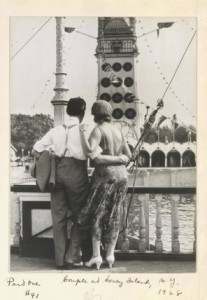As Alaska Notches 56 Years Since It Became a State, a Note on Ruth Gruber’s Role in the March to Statehood
On this date in 1959 Alaska became the US’s 49th State. Til then the Interior Department had a big hand in administering the territory, though there was also local government. Spanning 1941-46, Ruth Gruber—now 104, and the most senior living member of FDR administration—worked in the Cabinet-level department, and during that time served in Alaska as Secretary Harold Ickes’ Special Representative to the region. Her work there began in Spring 1941, a strategic place to be, especially when just six months later the Japanese air force bombed Pearl Harbor. After Hawaii, Alaska was the US’s other key Pacific outpost. She was a natural for the role in Alaska, which she got at age 29, as Harold Ickes had read her 1937 book I Went to the Soviet Arctic, a travelogue she wrote after becoming the first journalist or scholar—Westerner or Soviet, male or female—to travel in Siberia and observe the country’s population centers above the Arctic Circle. She explains how she got that earlier opportunity—after a Letter of Introduction to Soviet specialists by the mentor and Arctic explorer Viljalmur Stefanson, in her terrific memoir Ahead of Time: My Early Years as a Foreign Correspondent. One role she took on in Alaska was the establishment of homesteading in the vast land, anticipating especially the appeal the offer of land to settlers could have for US troops being demobilized as WWII ended. Her efforts helped lead ultimately to statehood, not even fifteen years following war’s end. You can read much more about Ruth’s career in her 18 books, 6 of which I helped her publish, many available nowadays from Open Road Integrated Media, and in my many blog posts about her, linked to here. Here she was photographed with local people.


